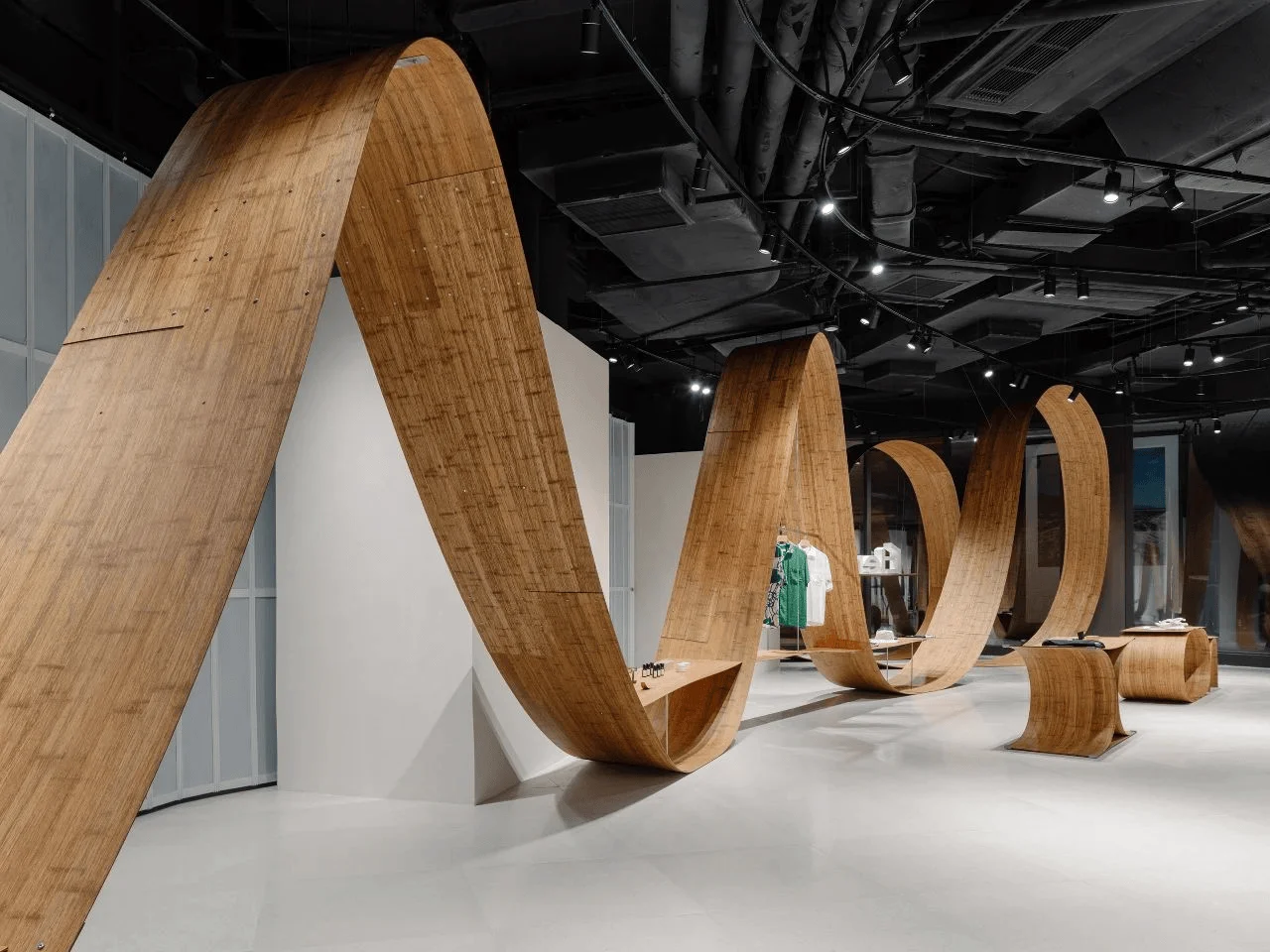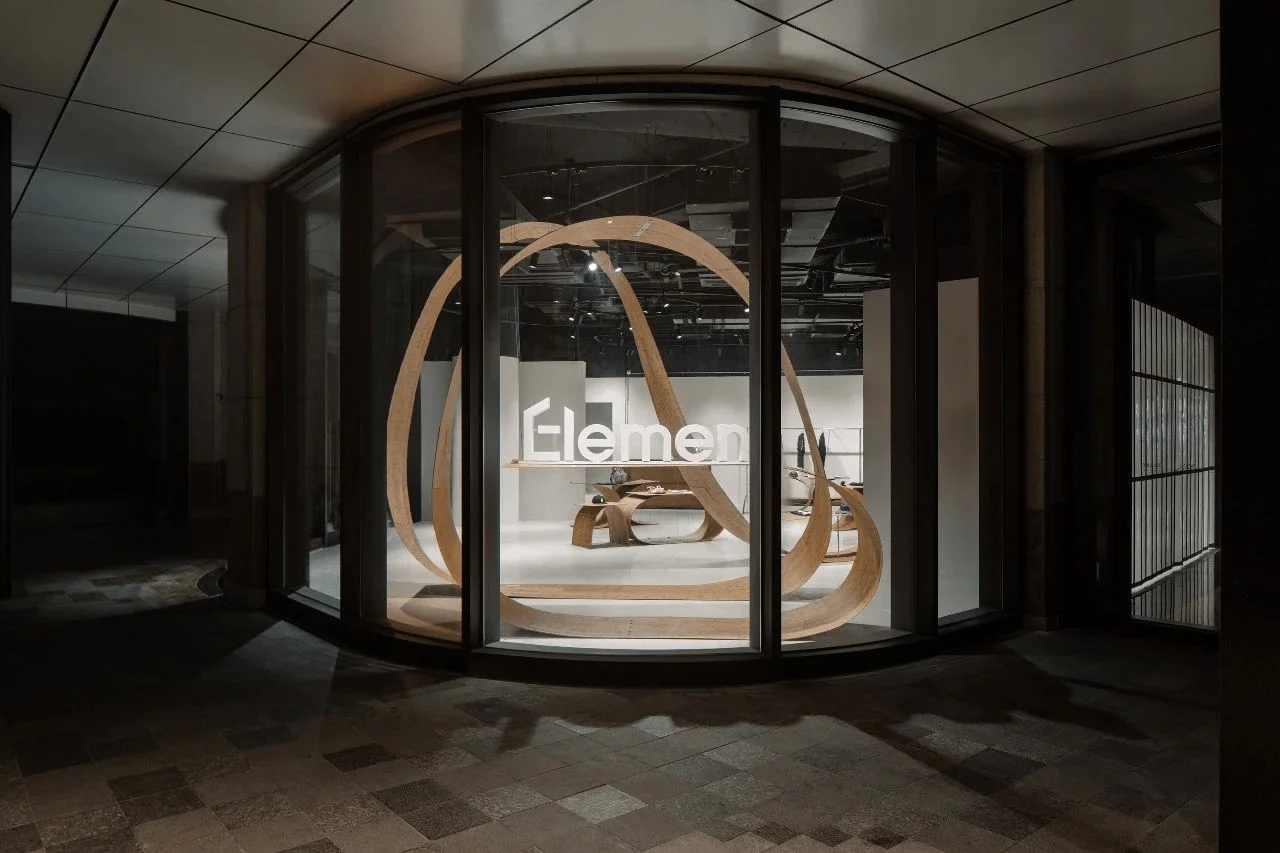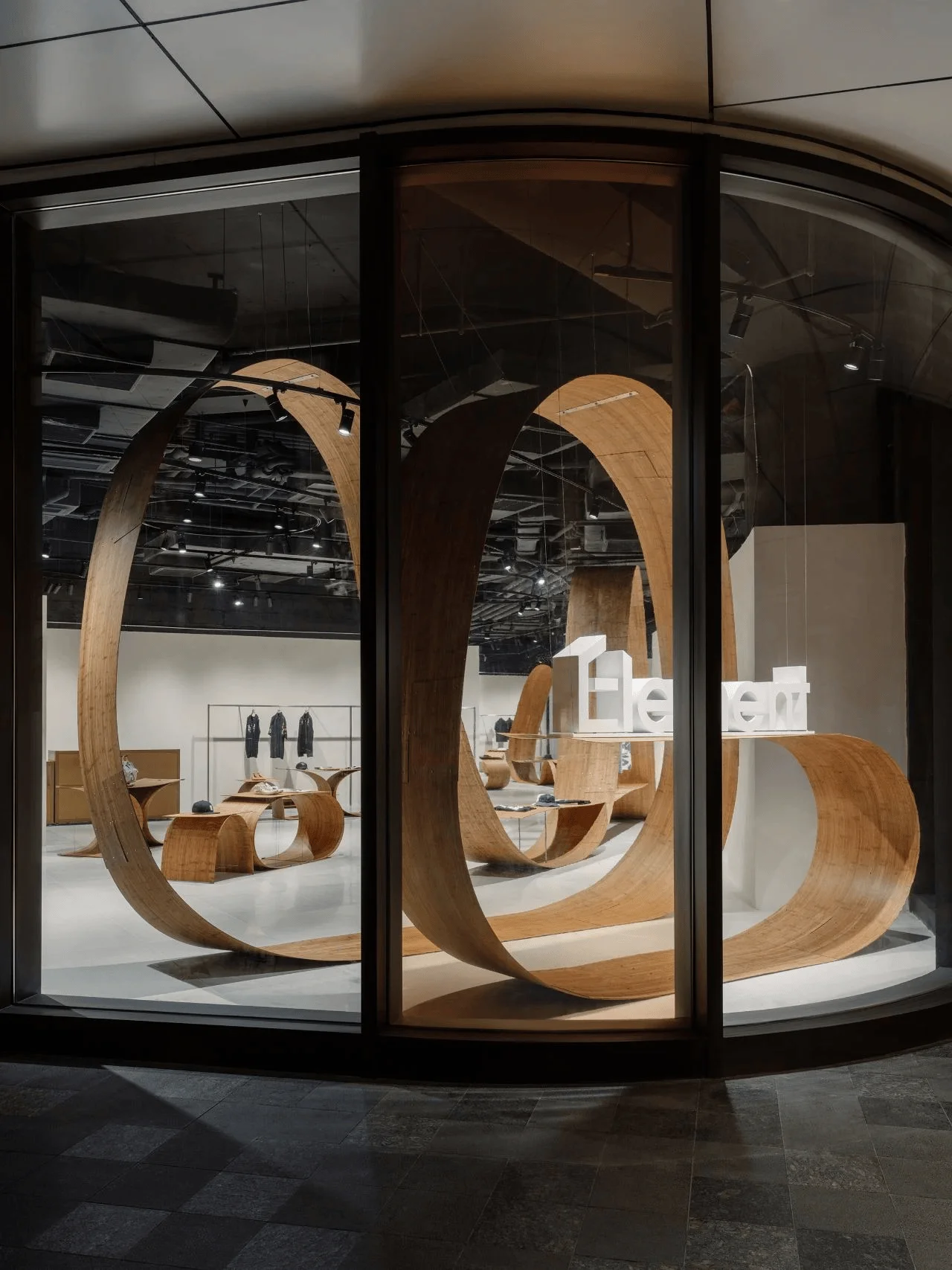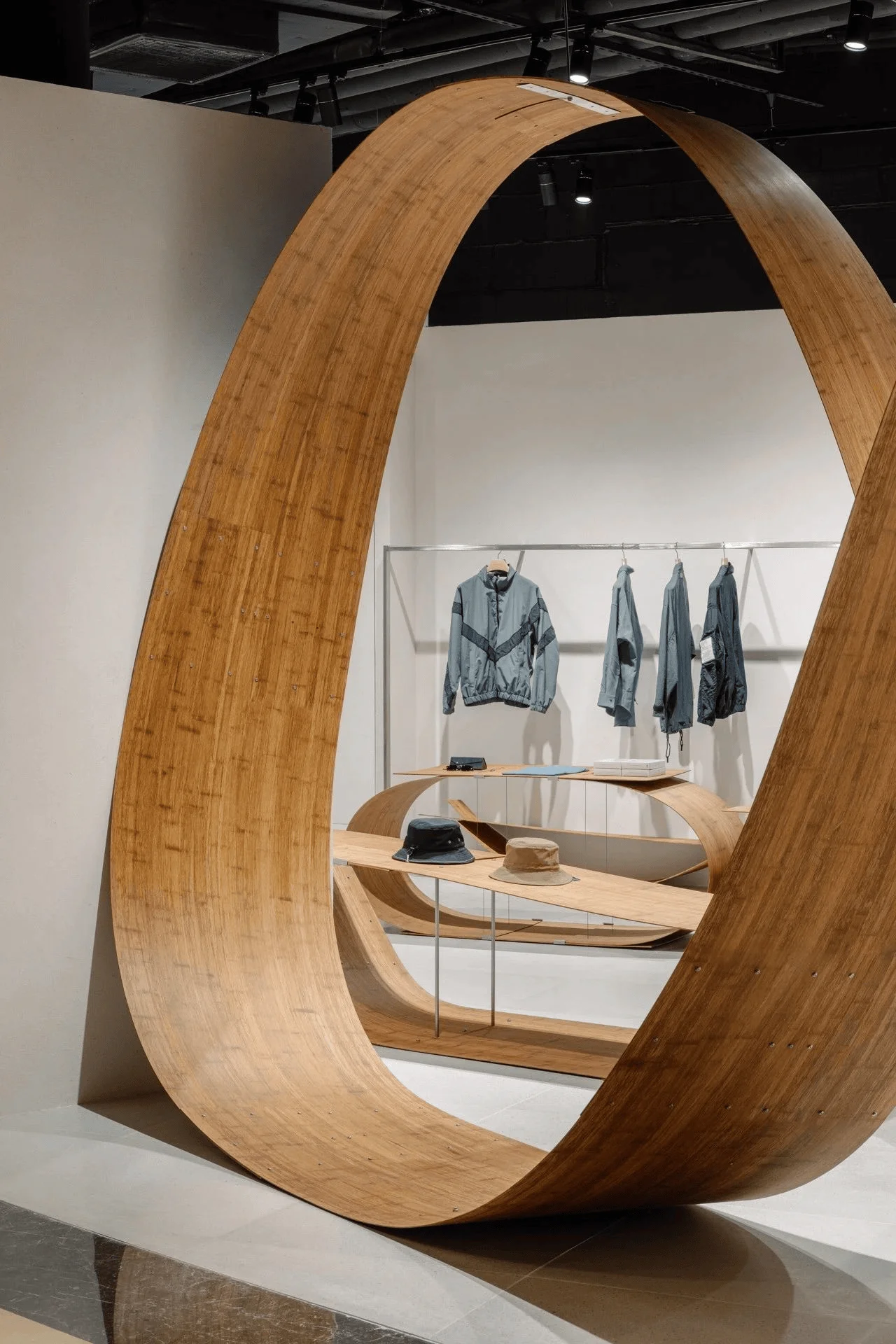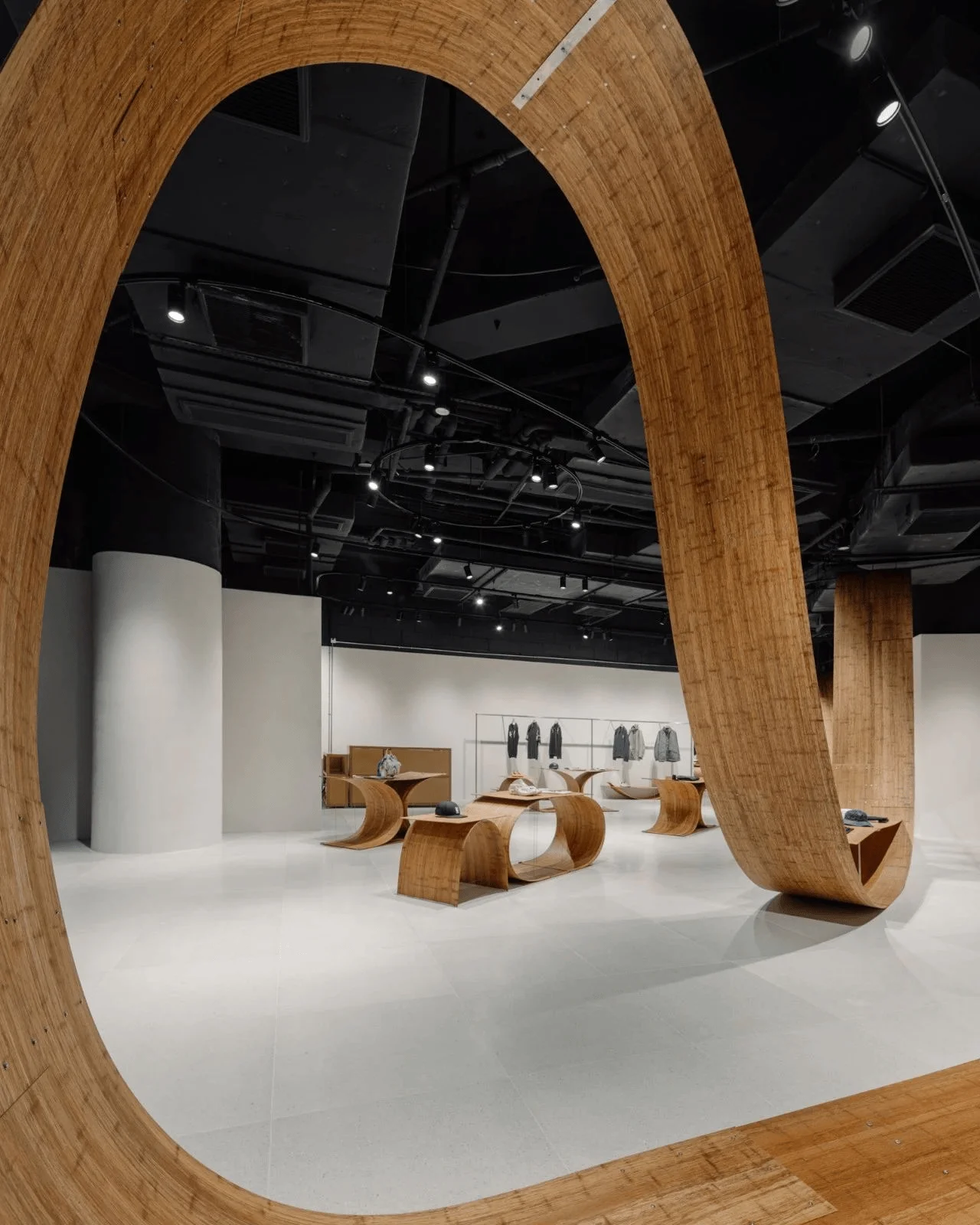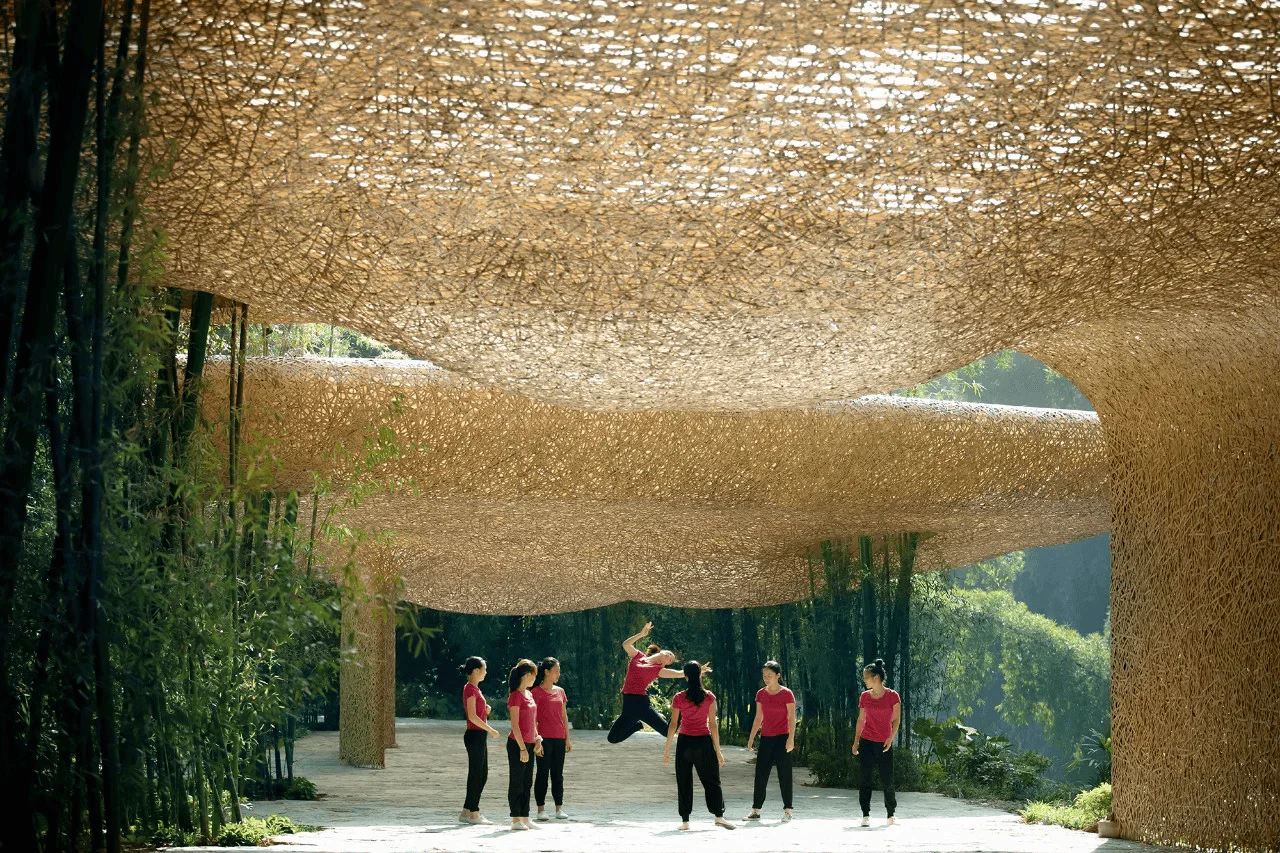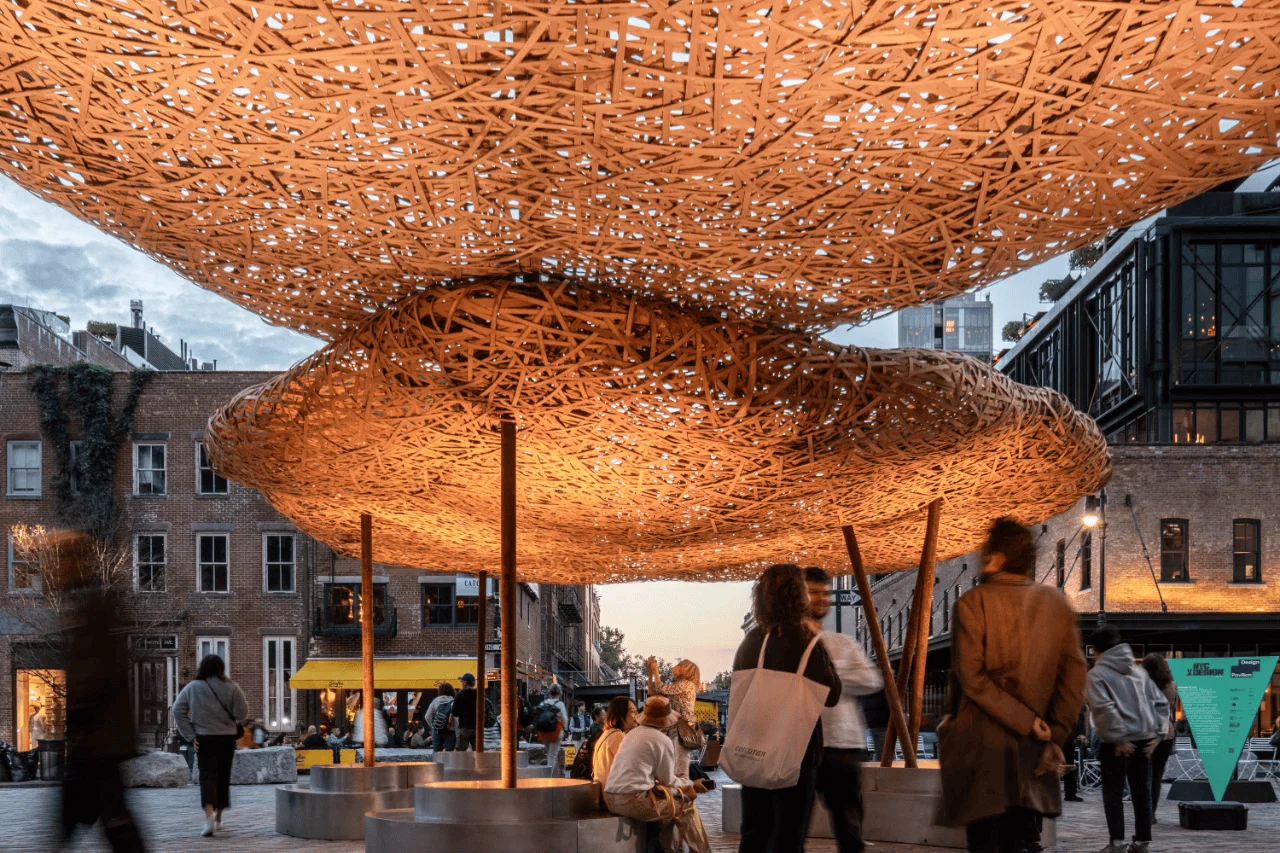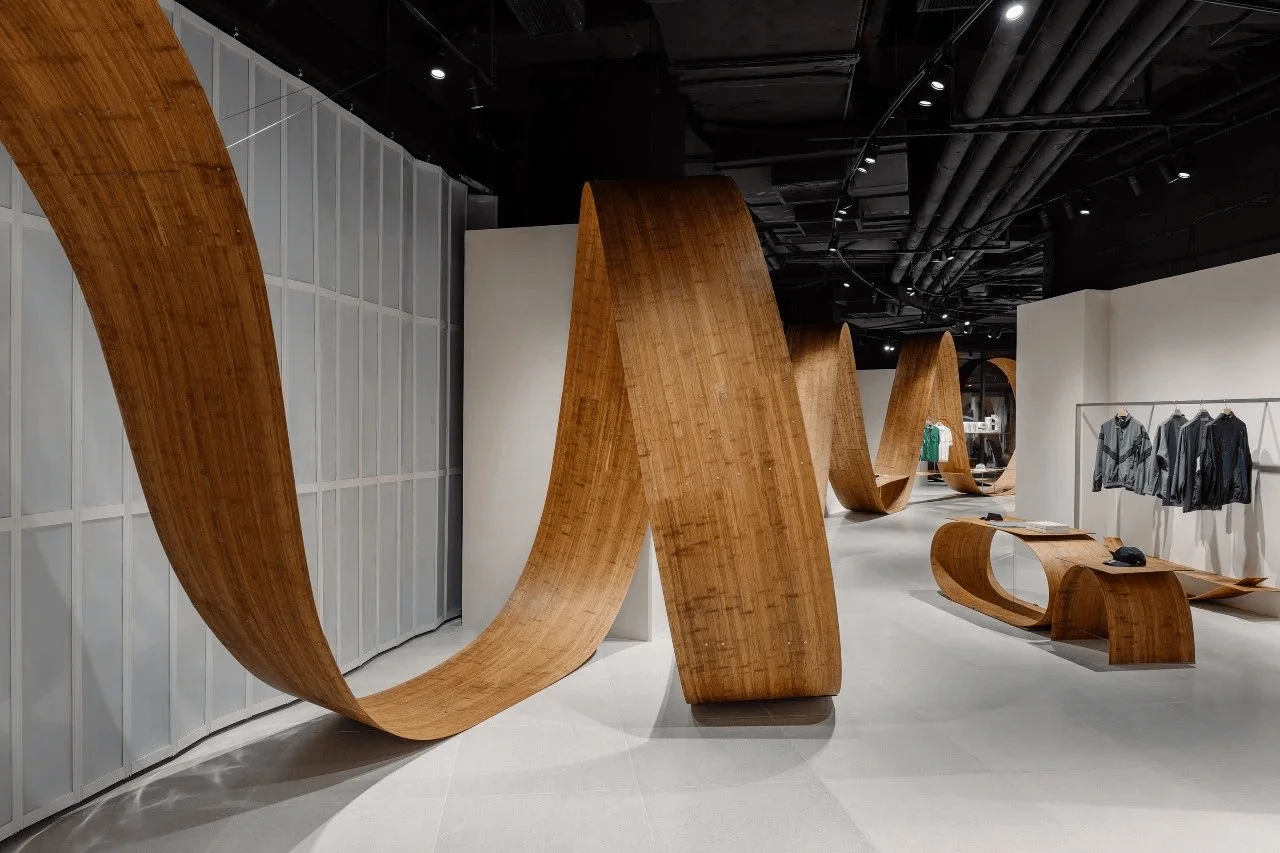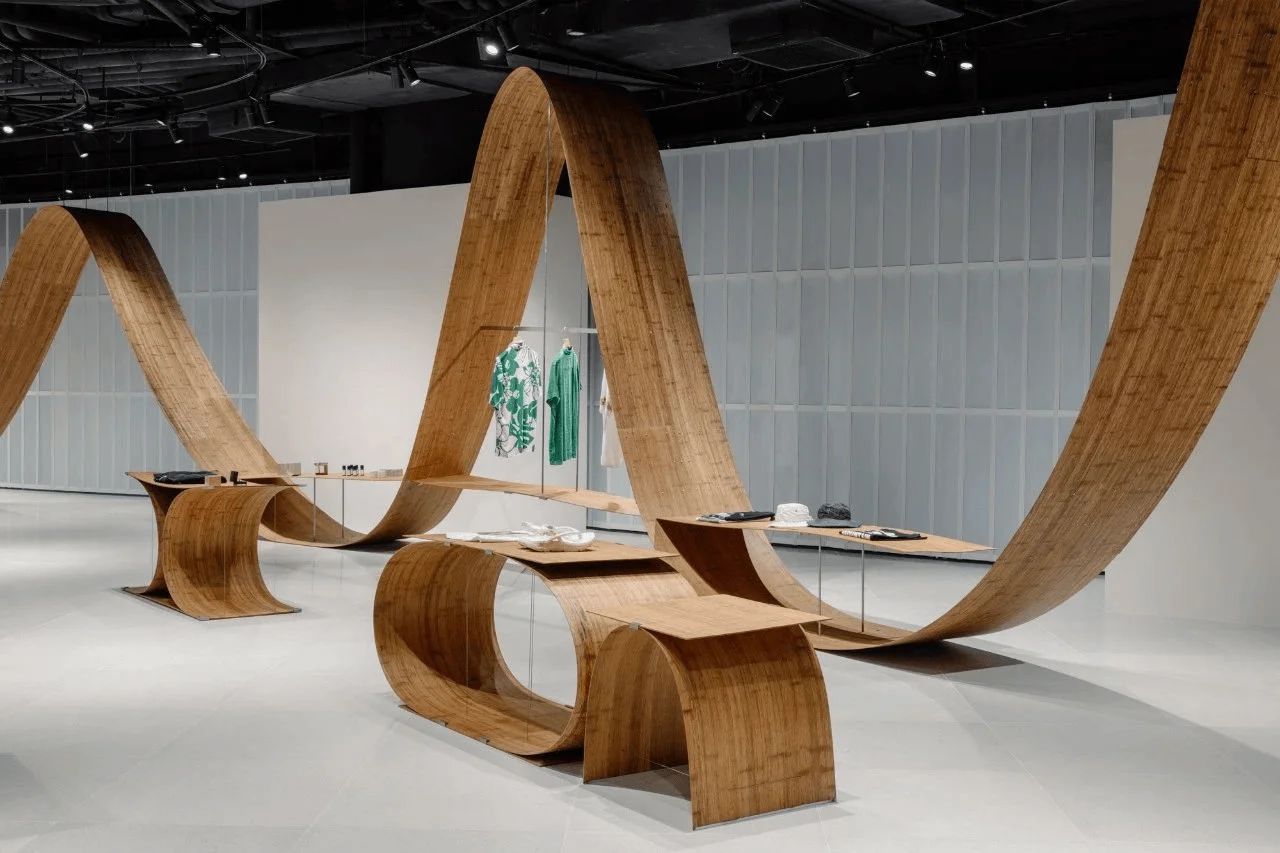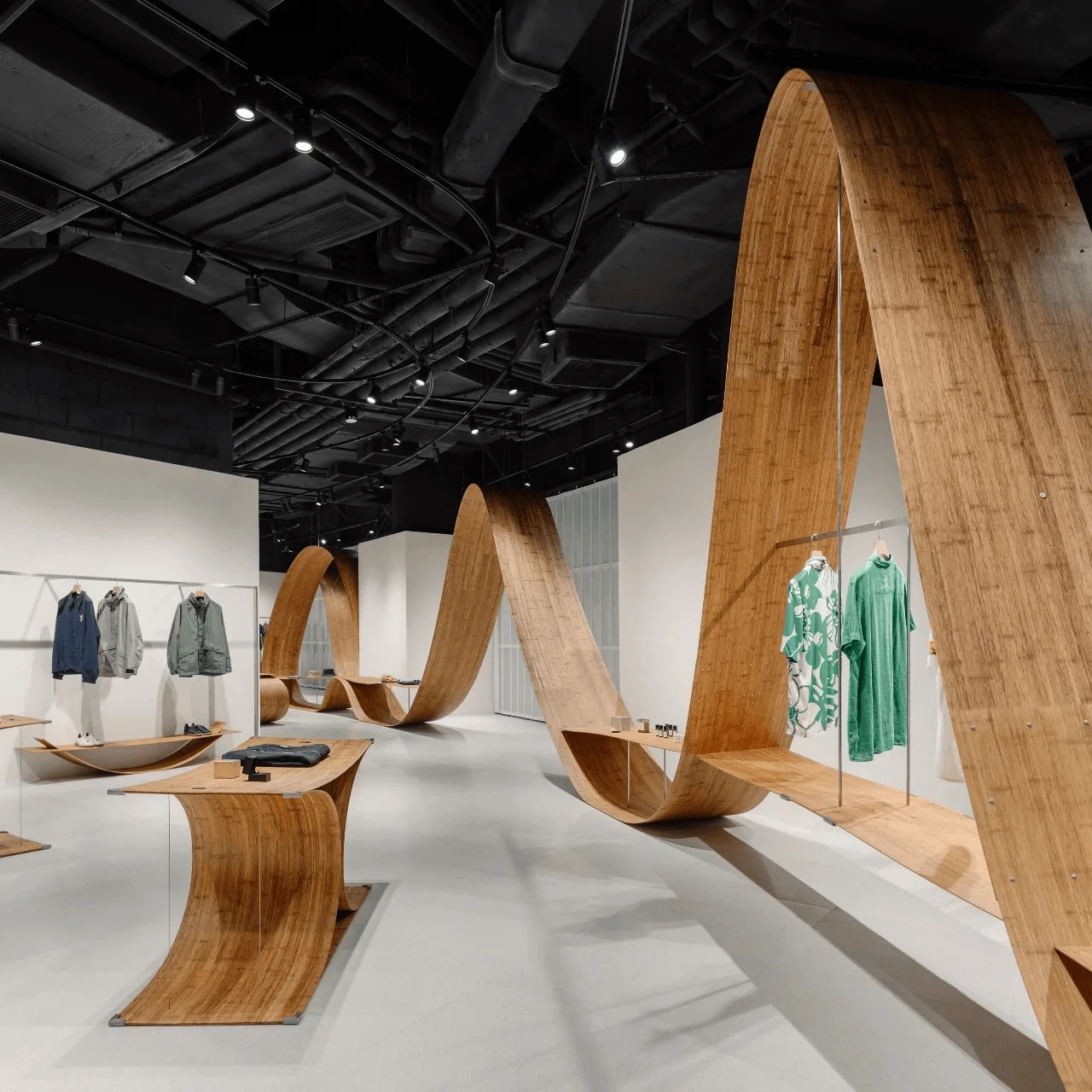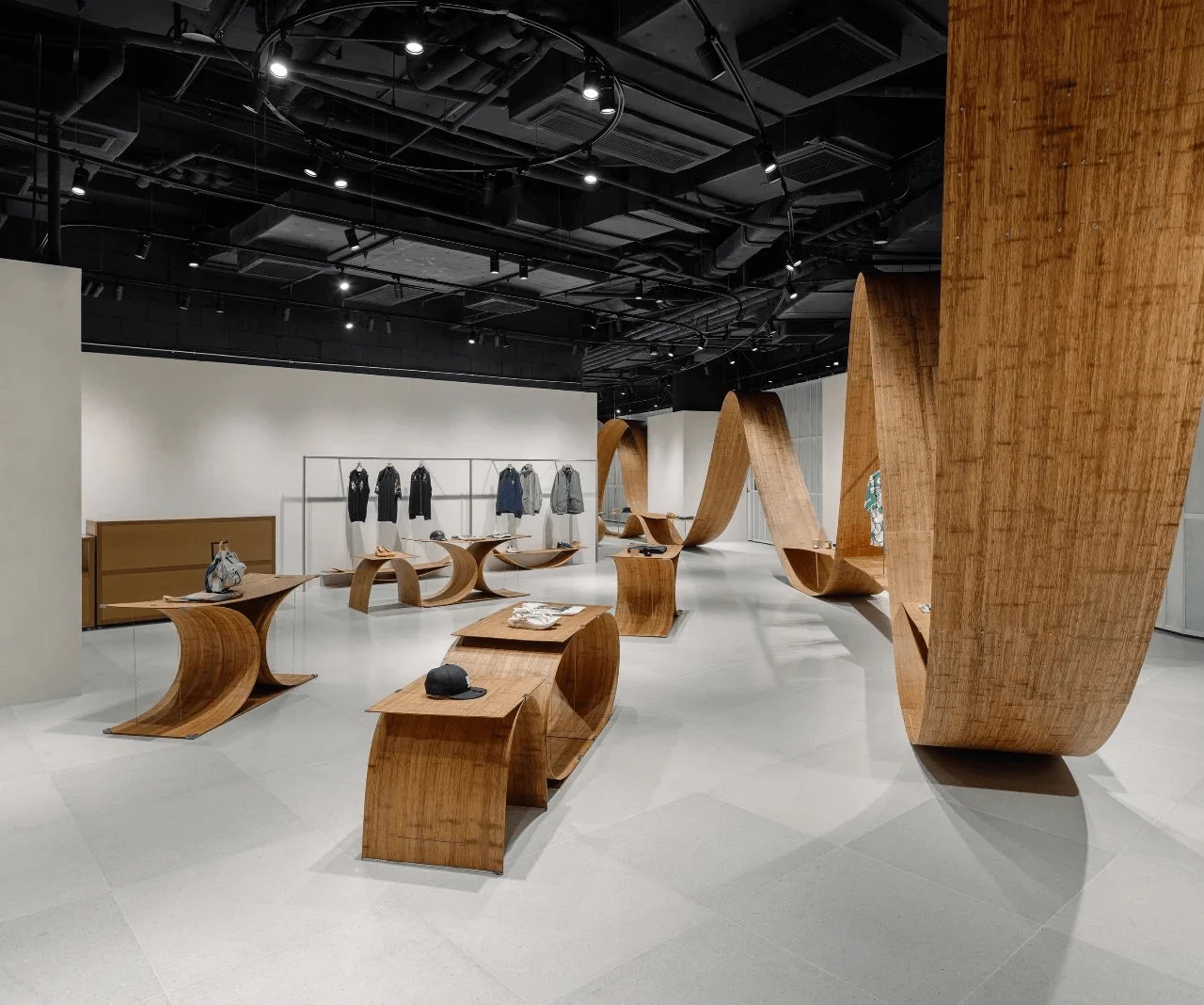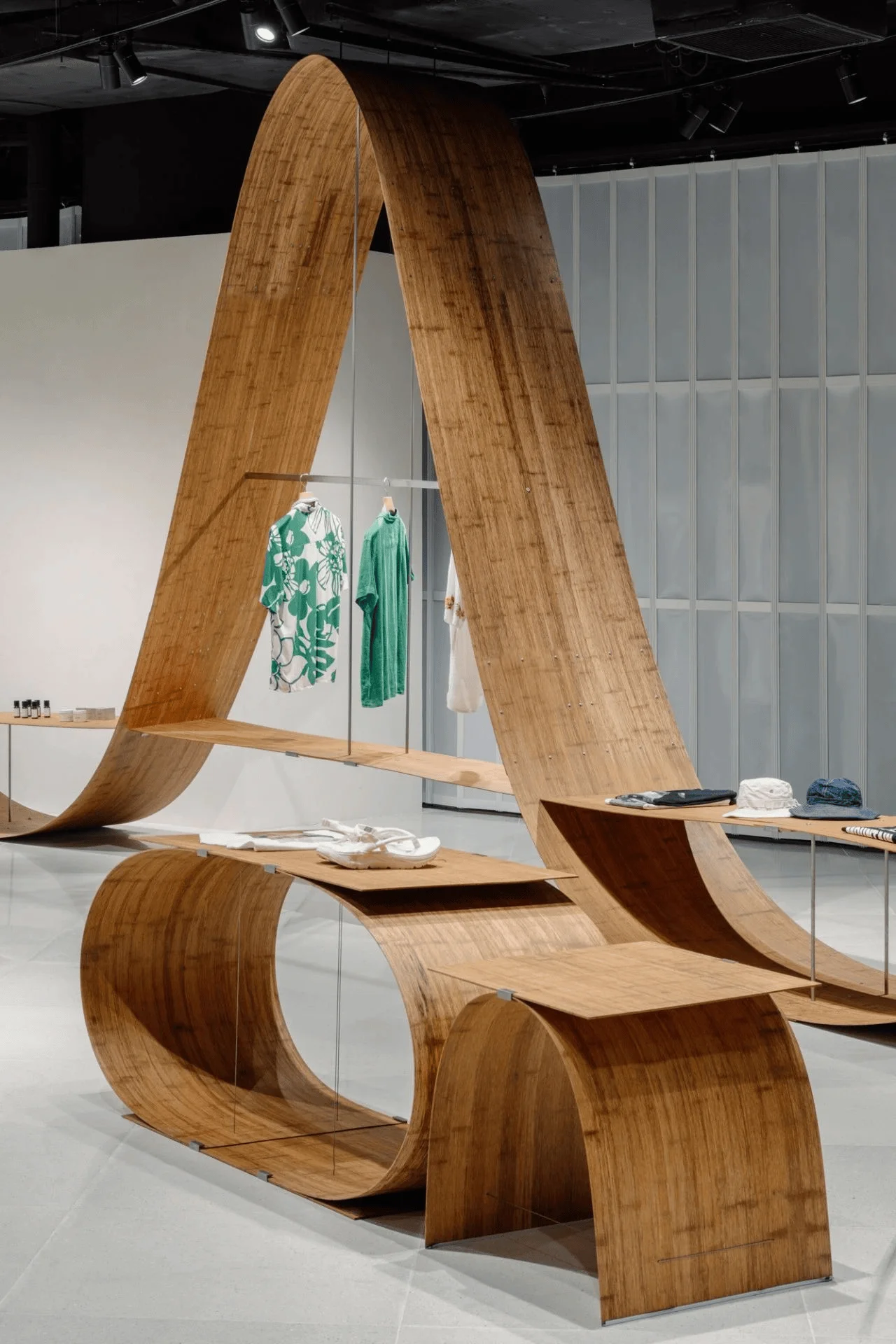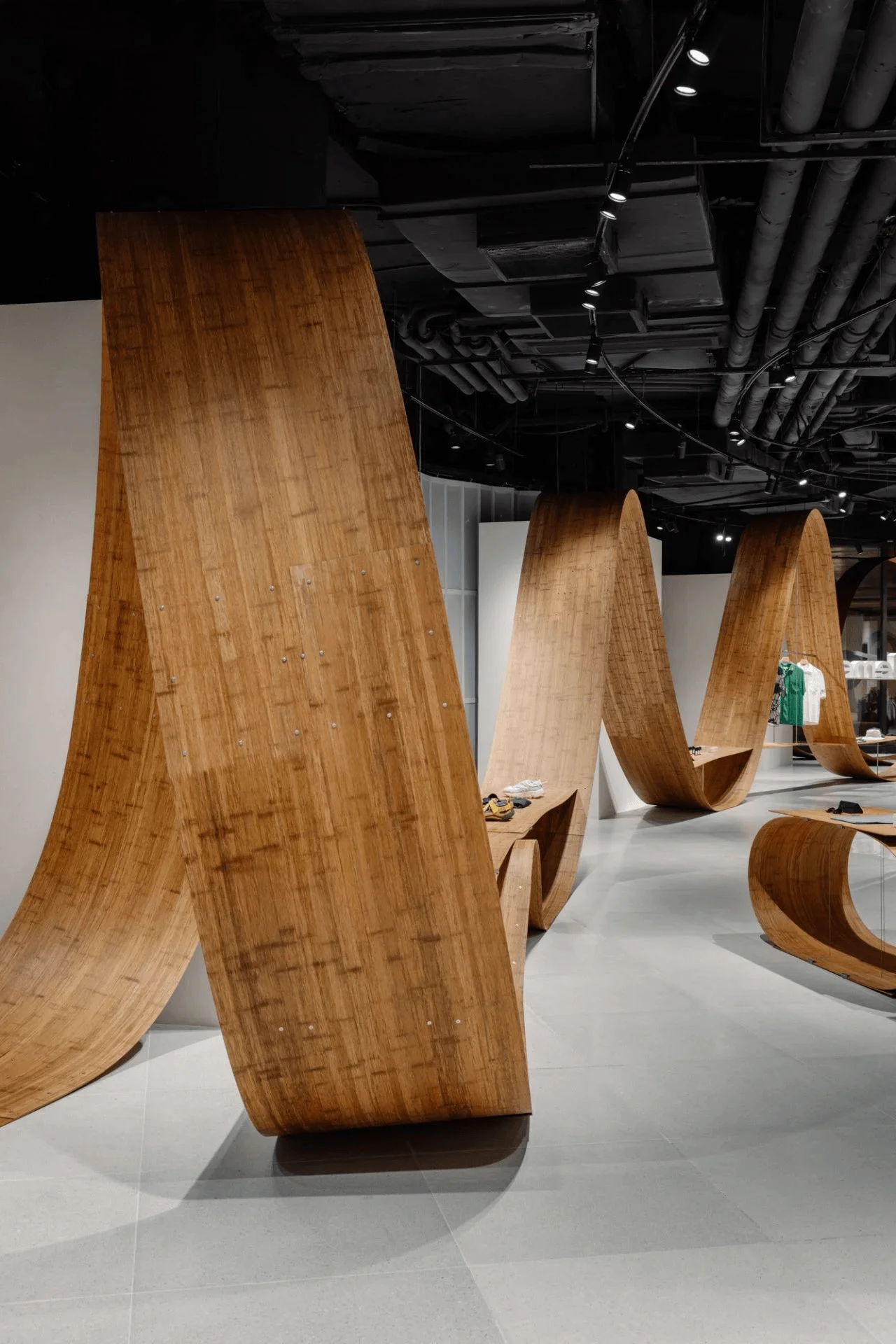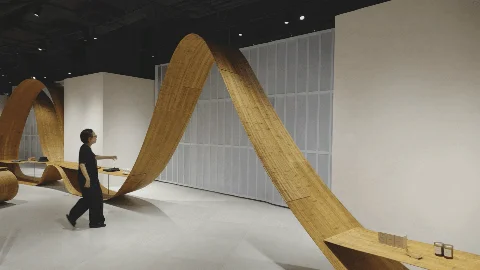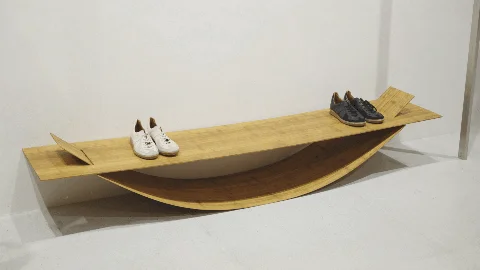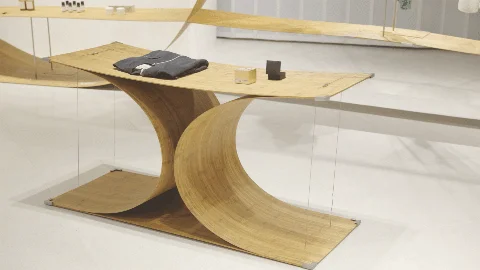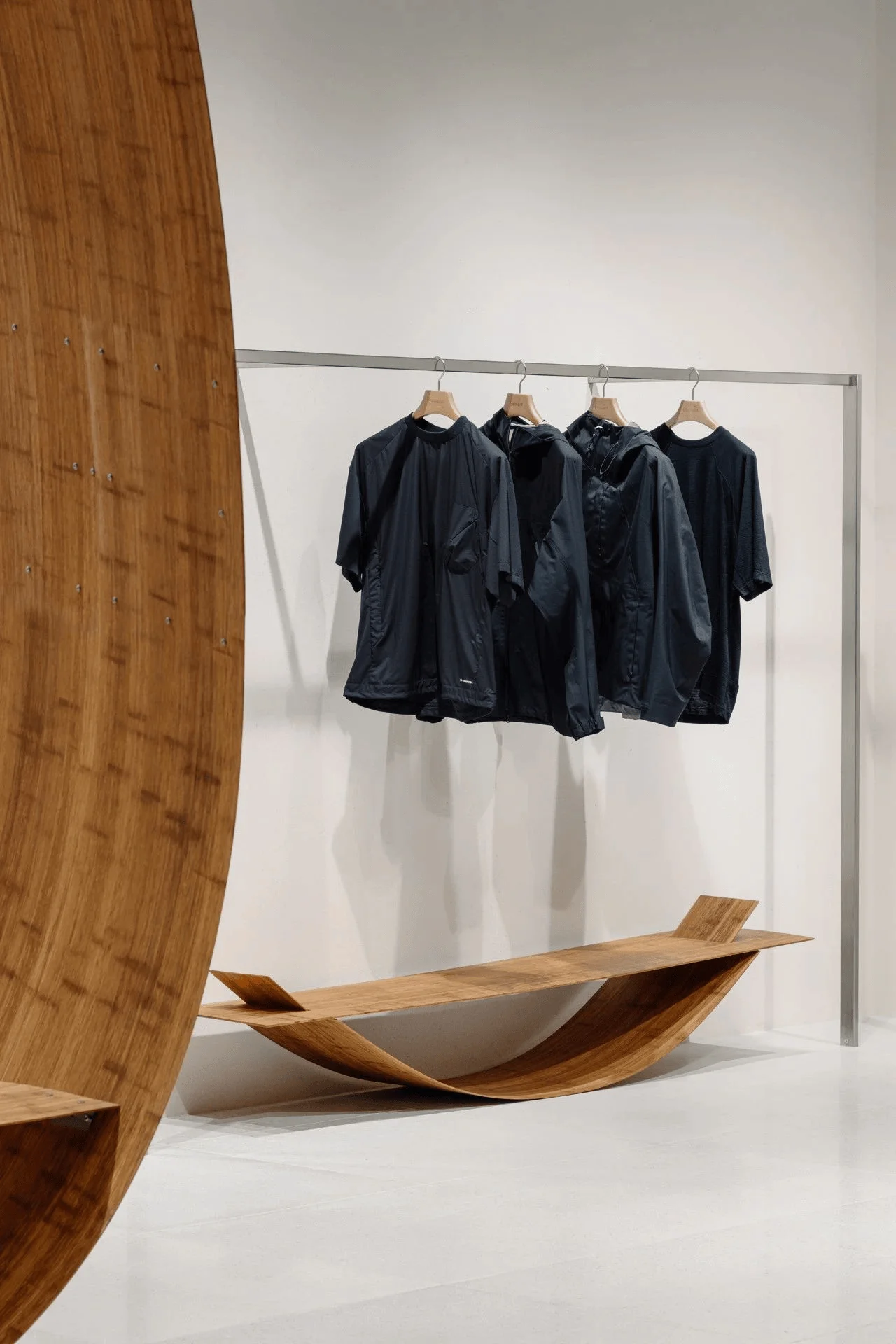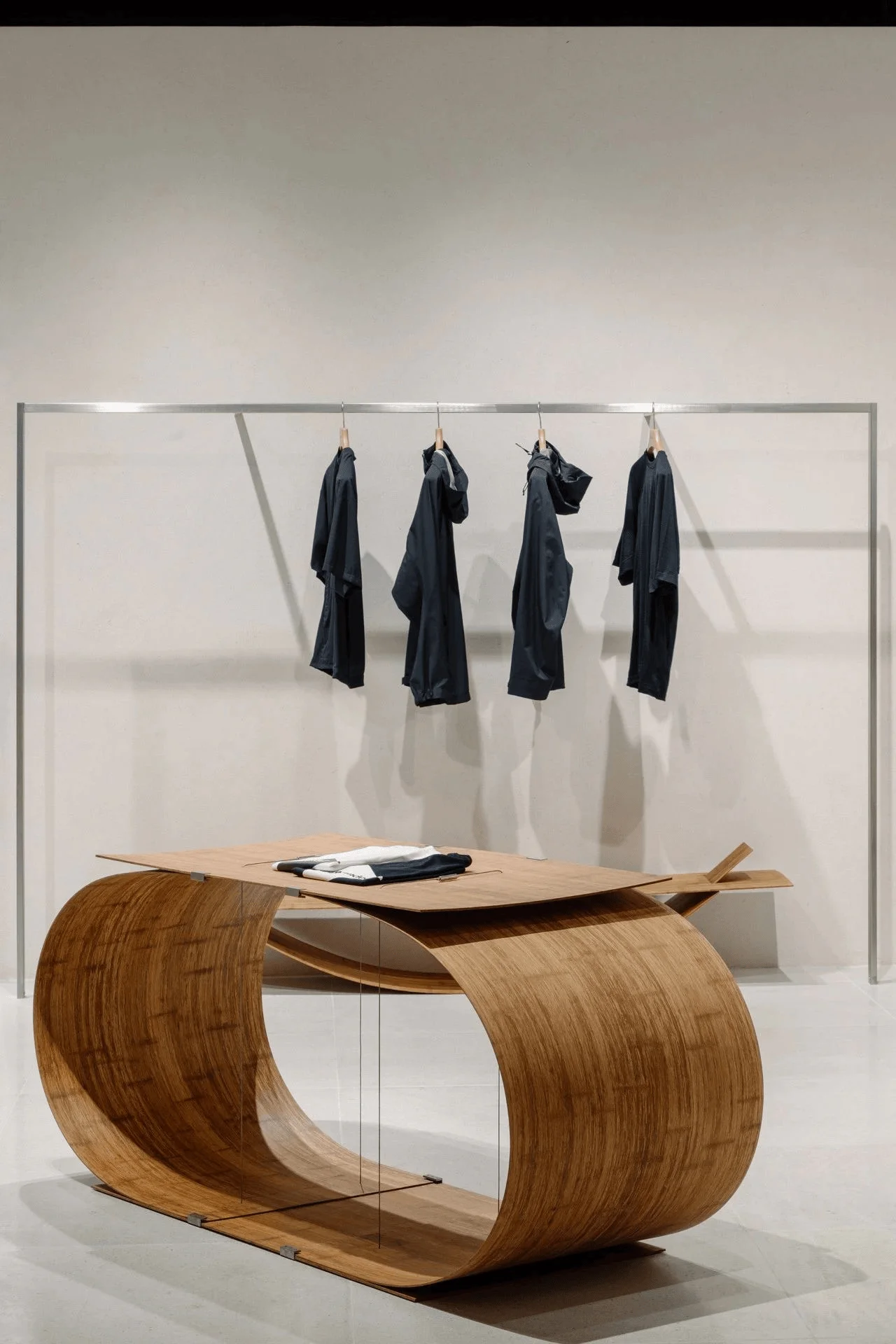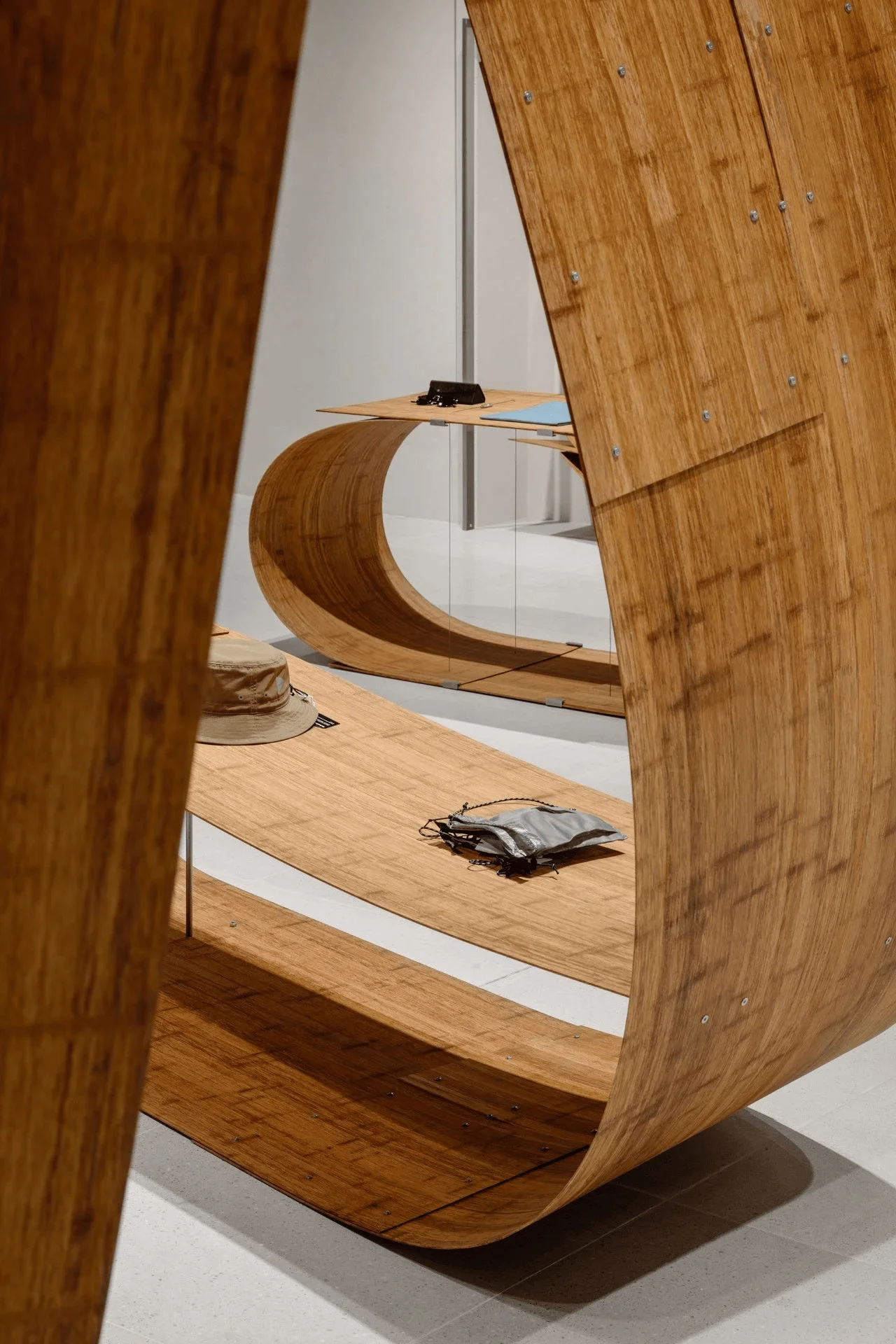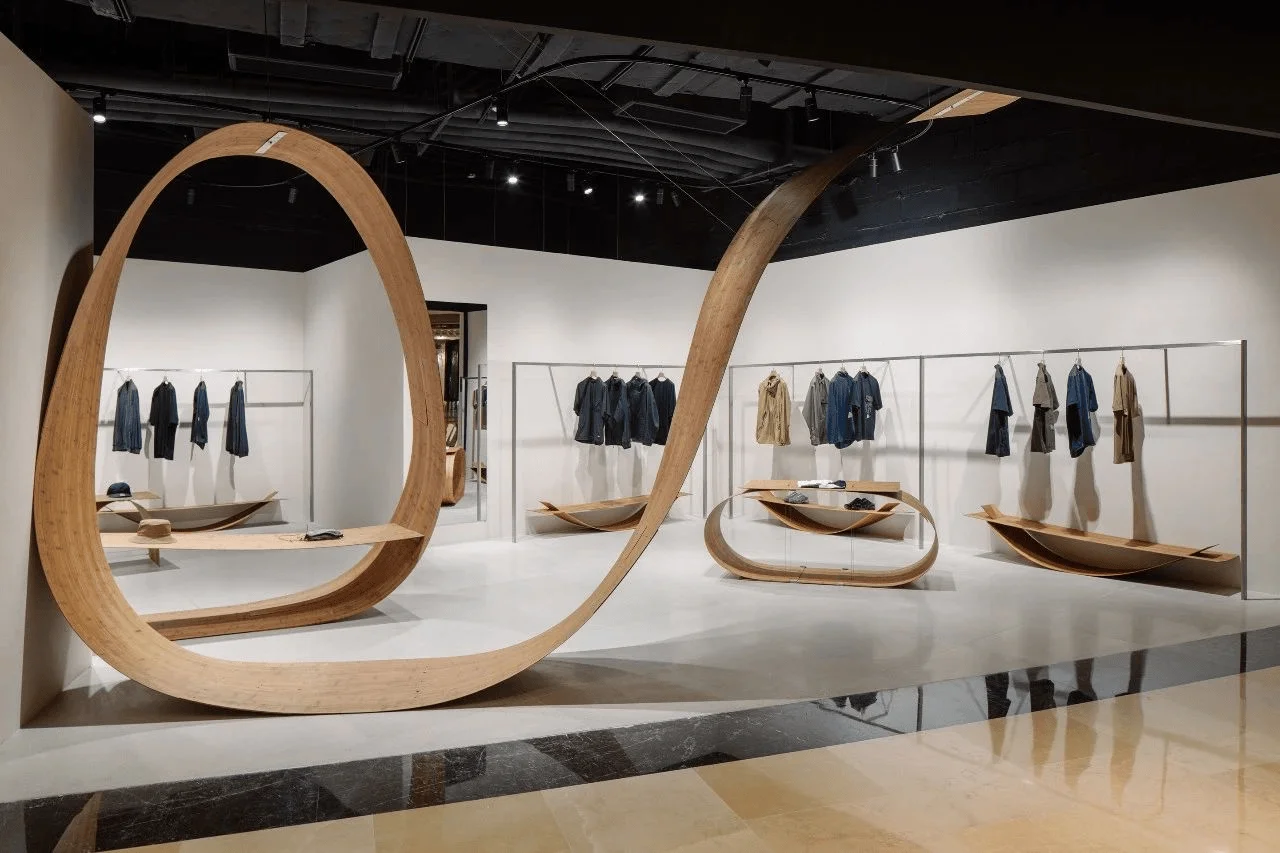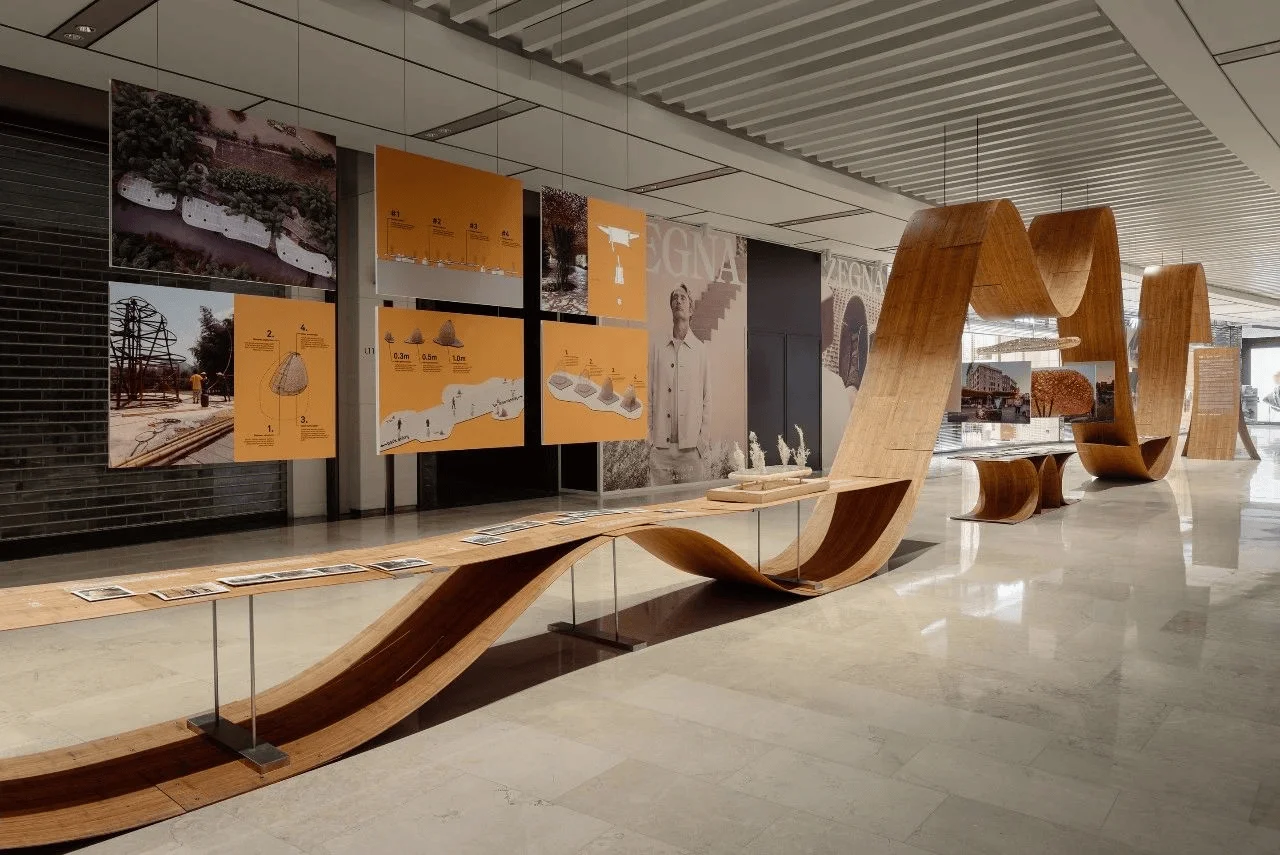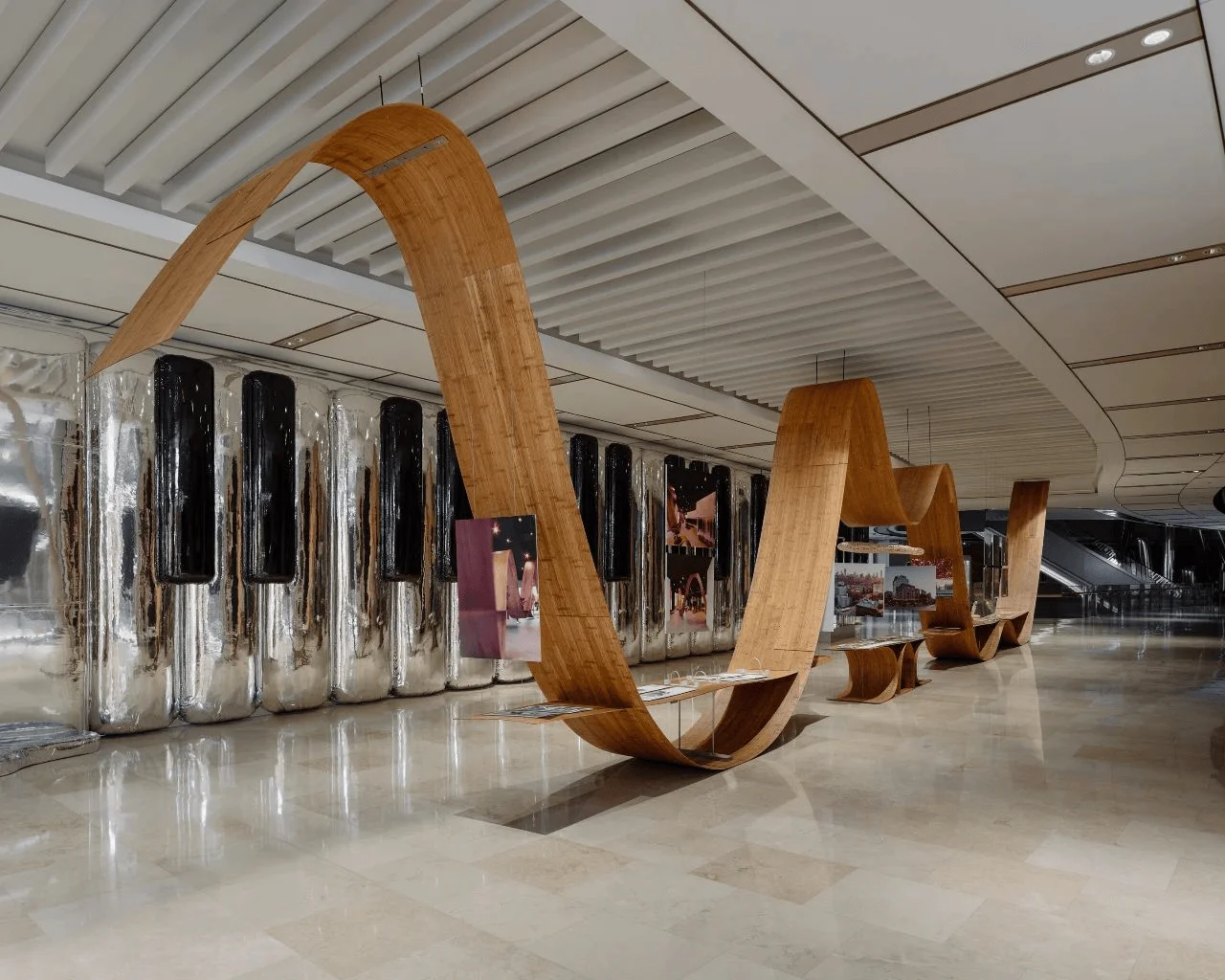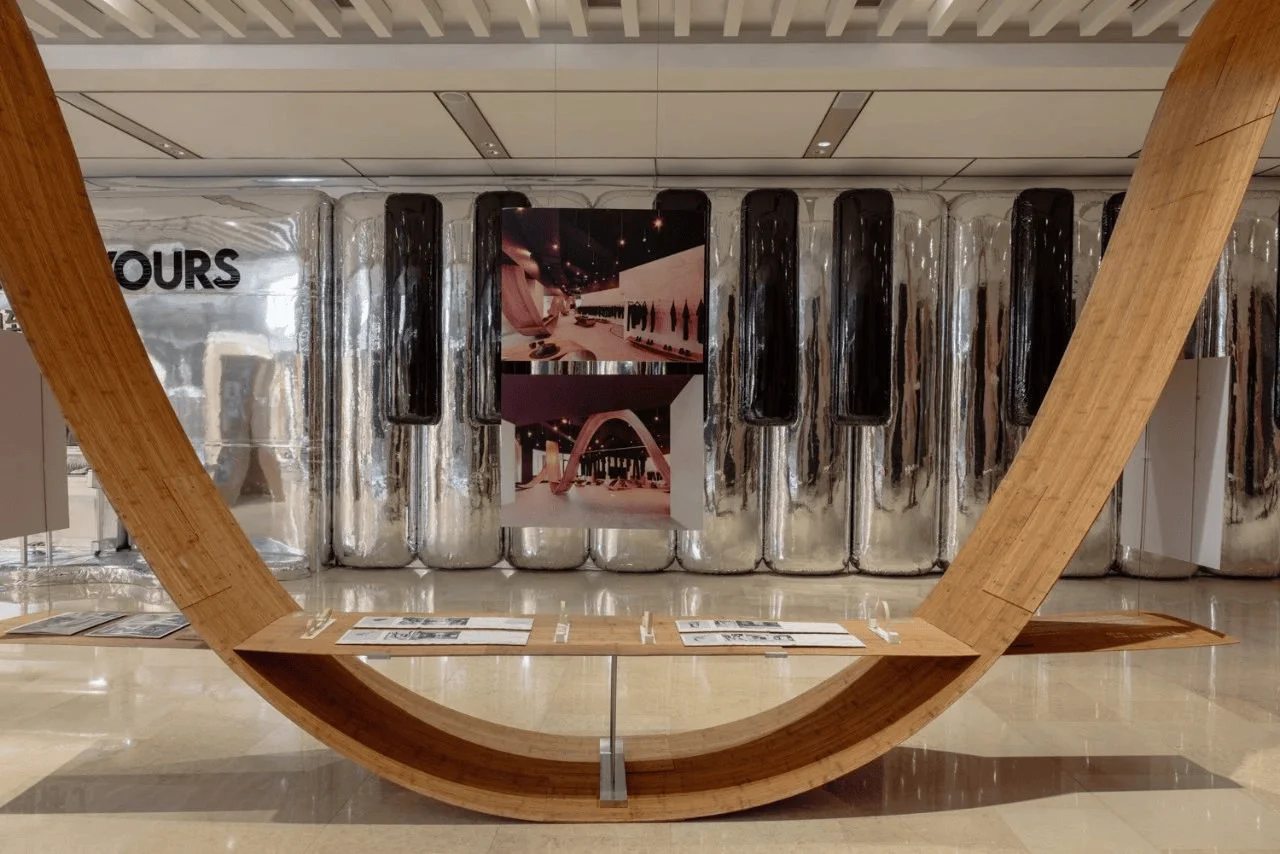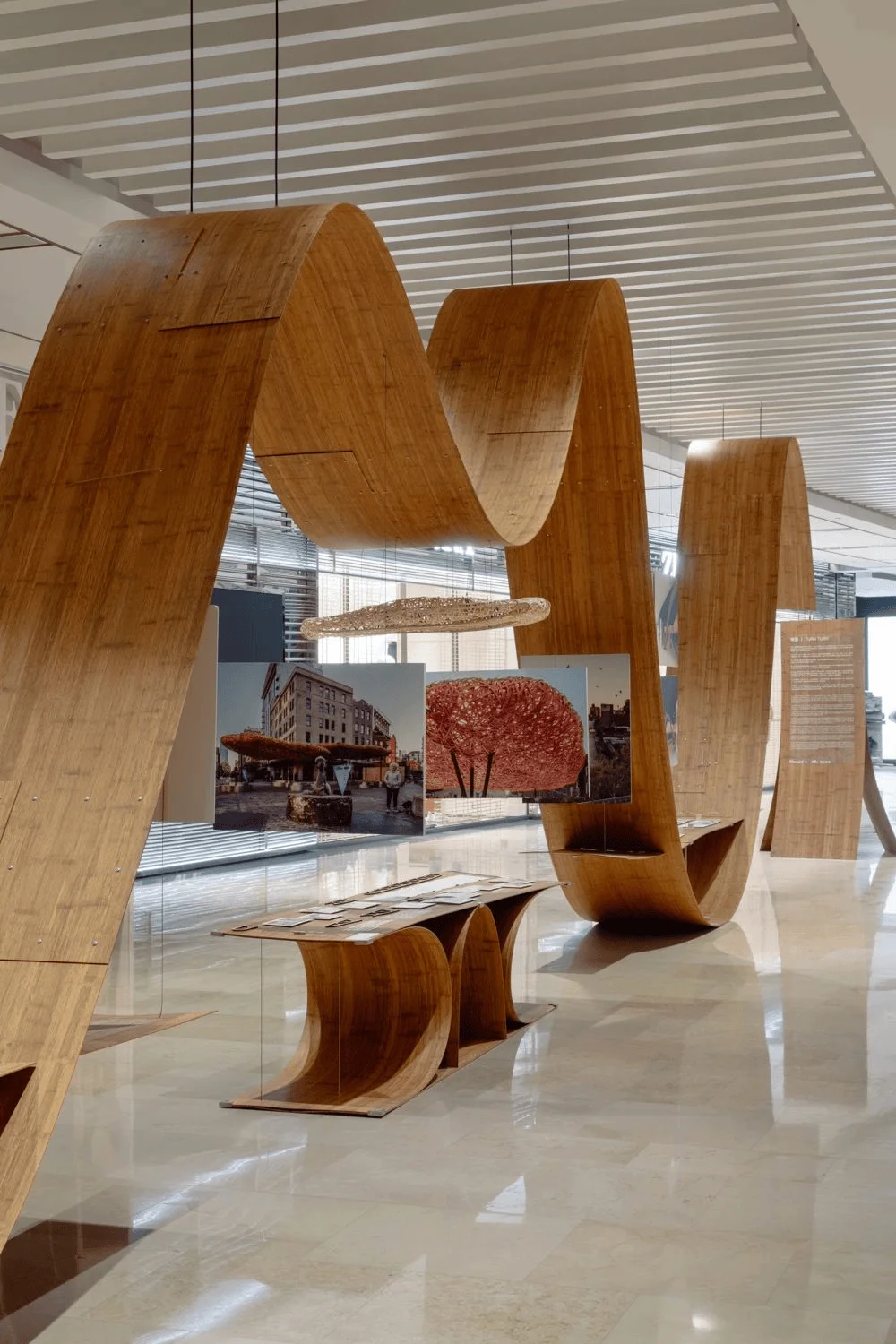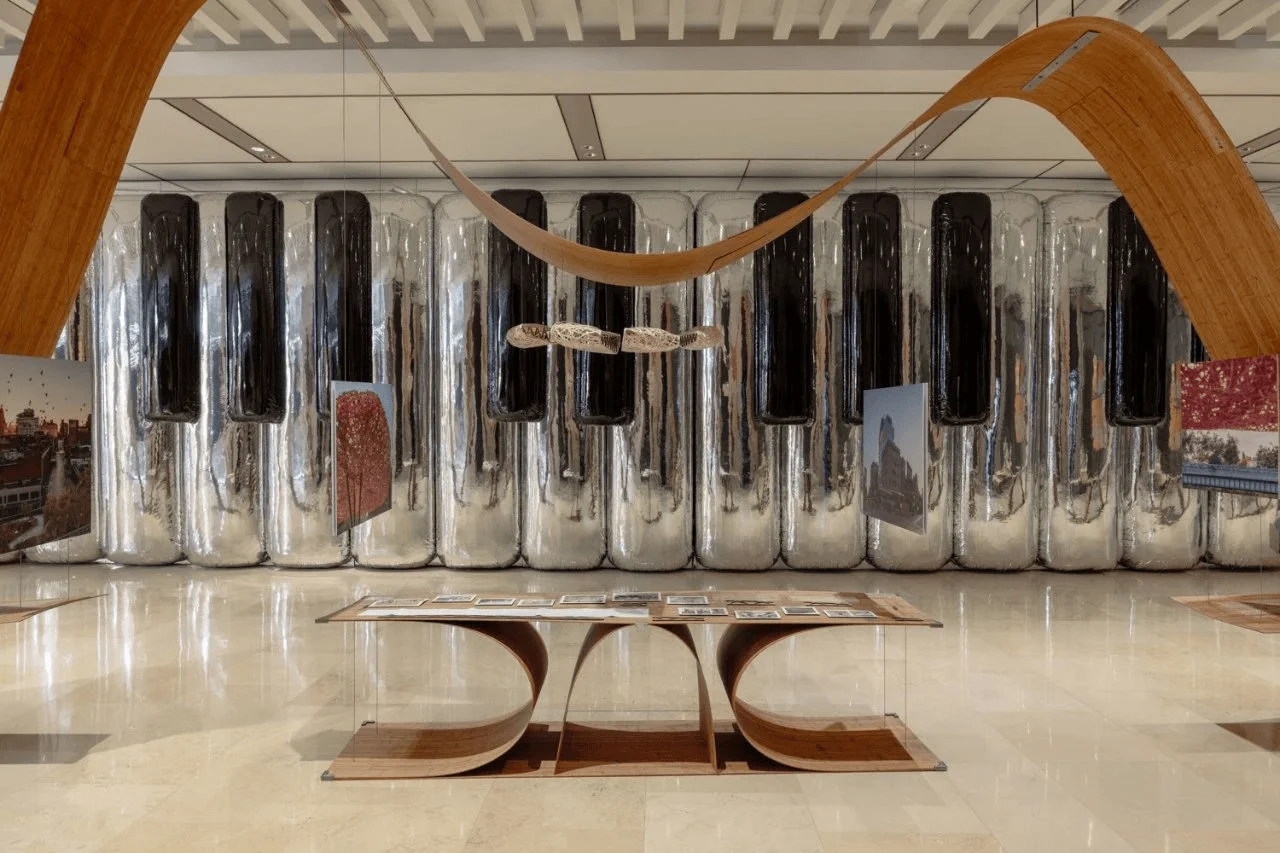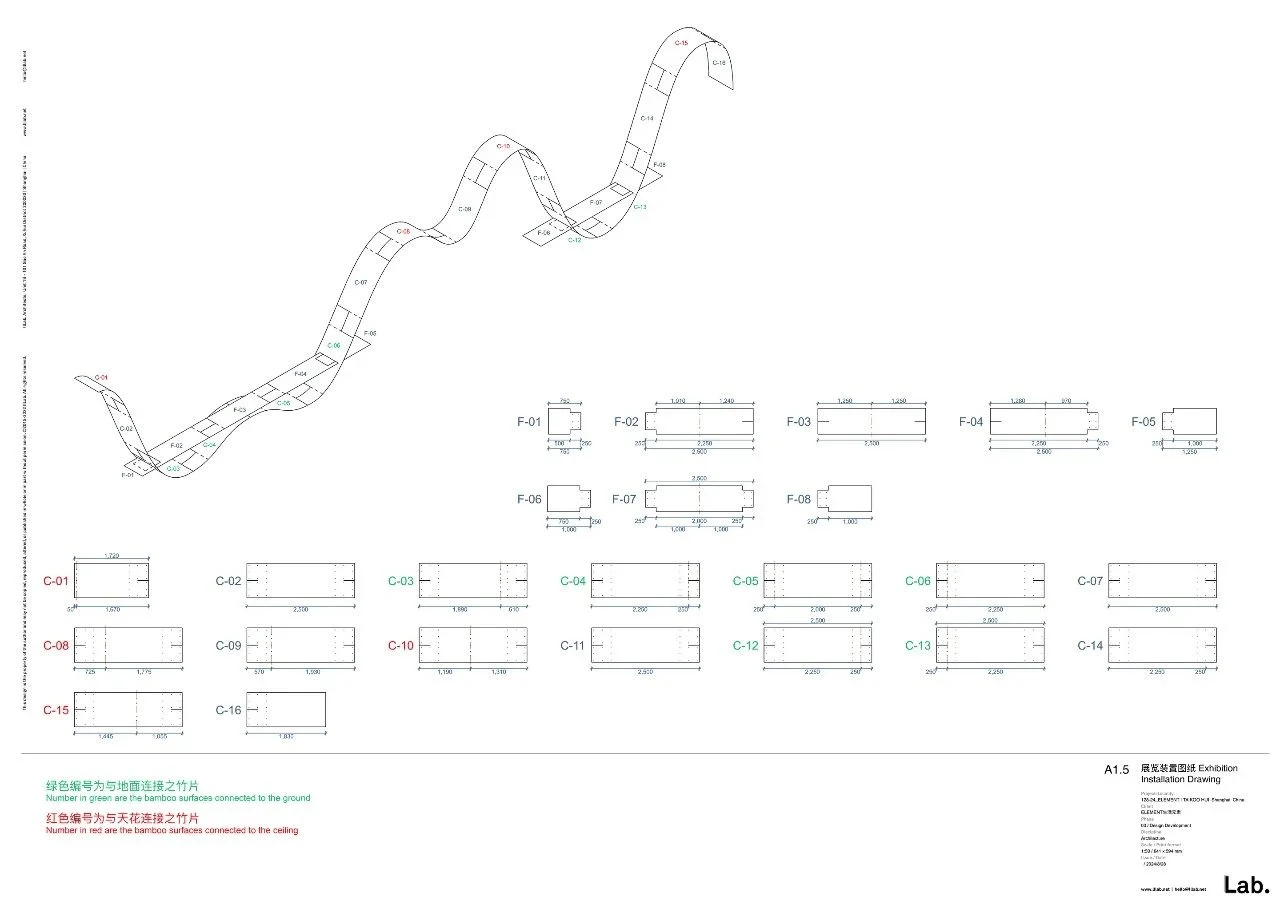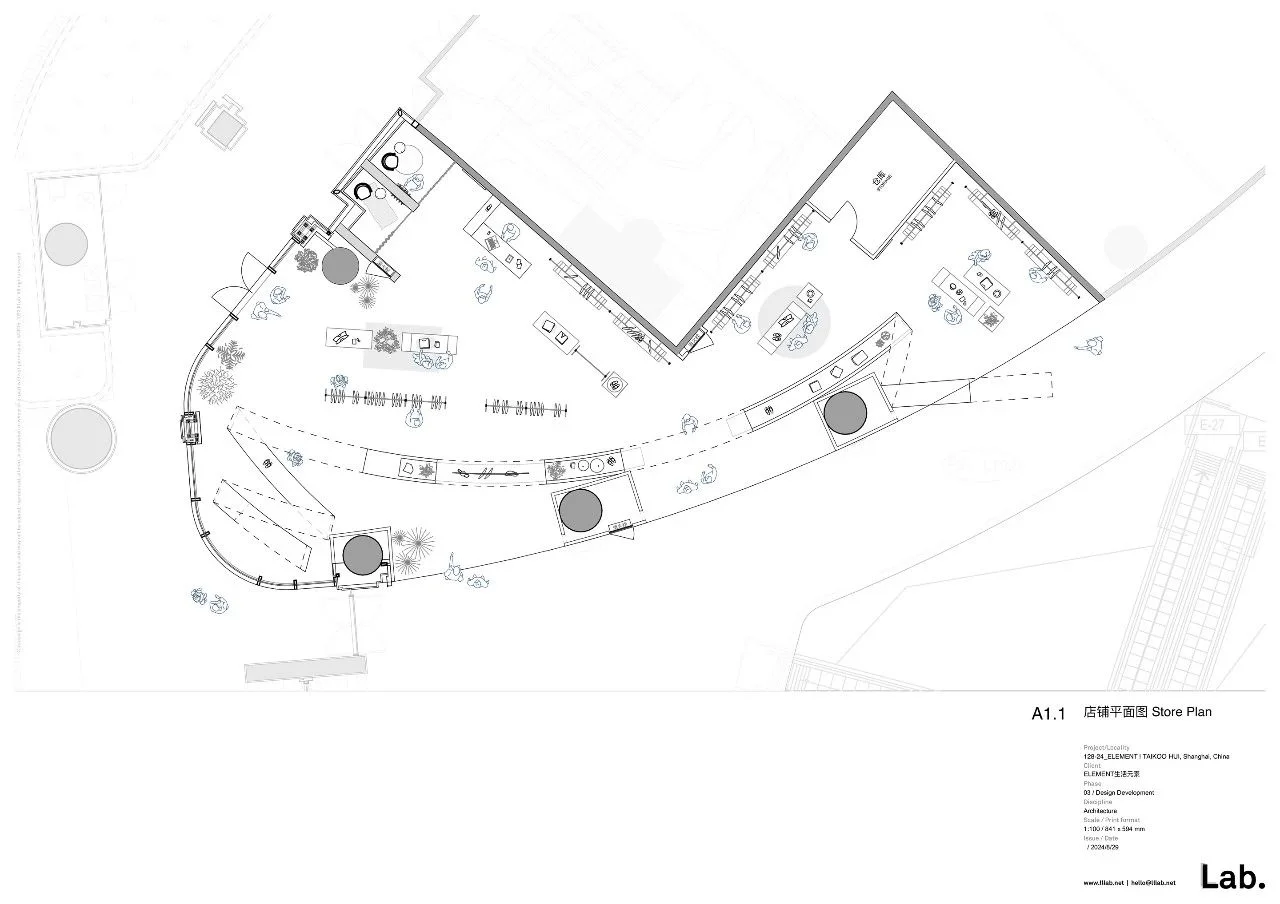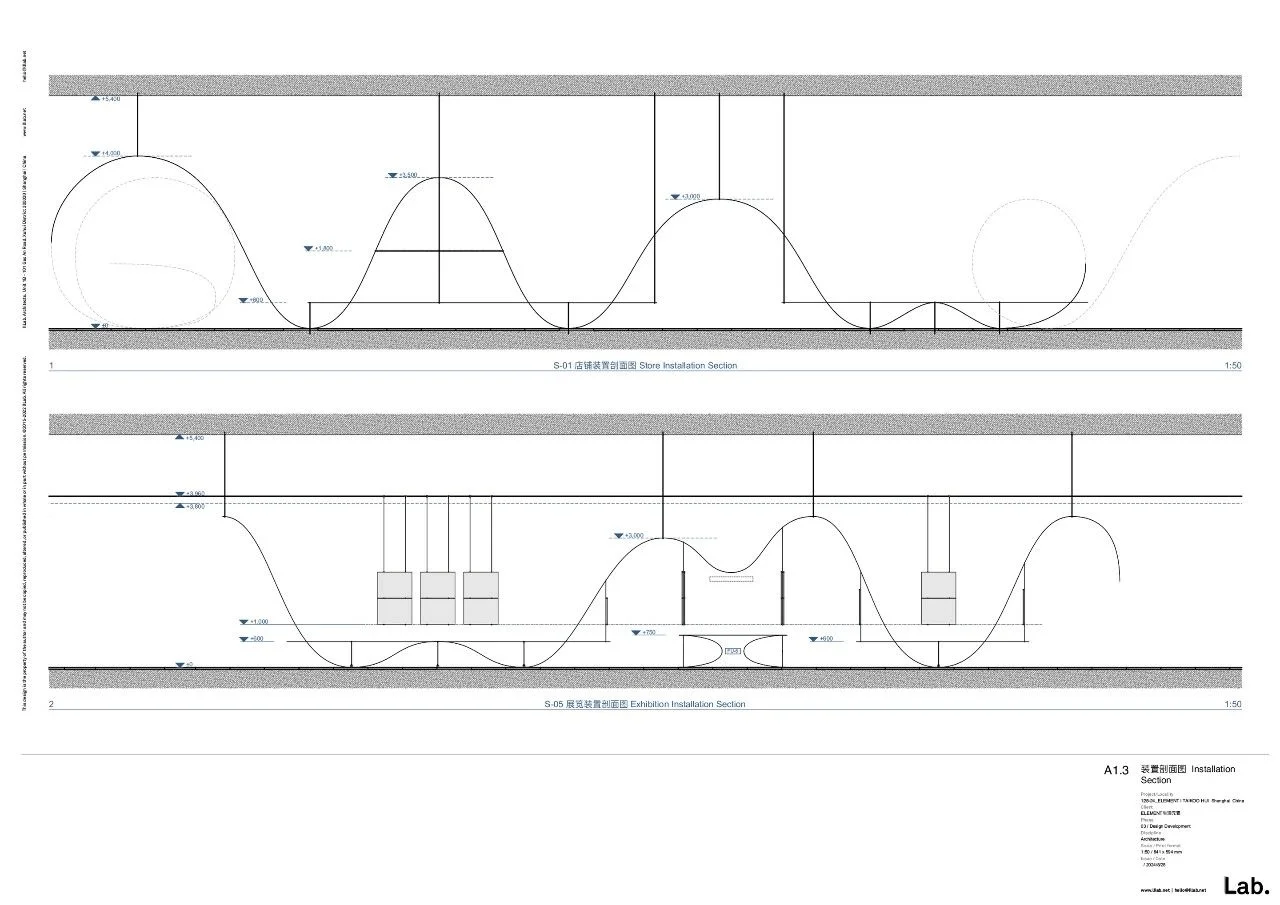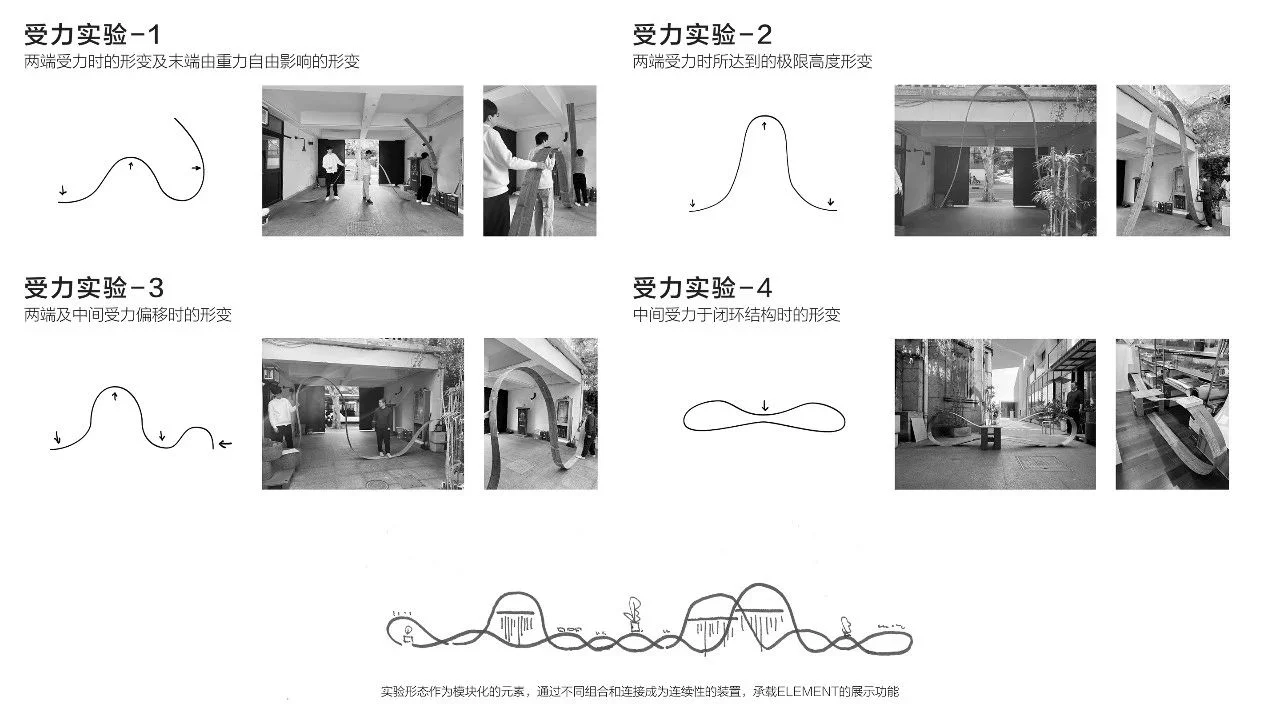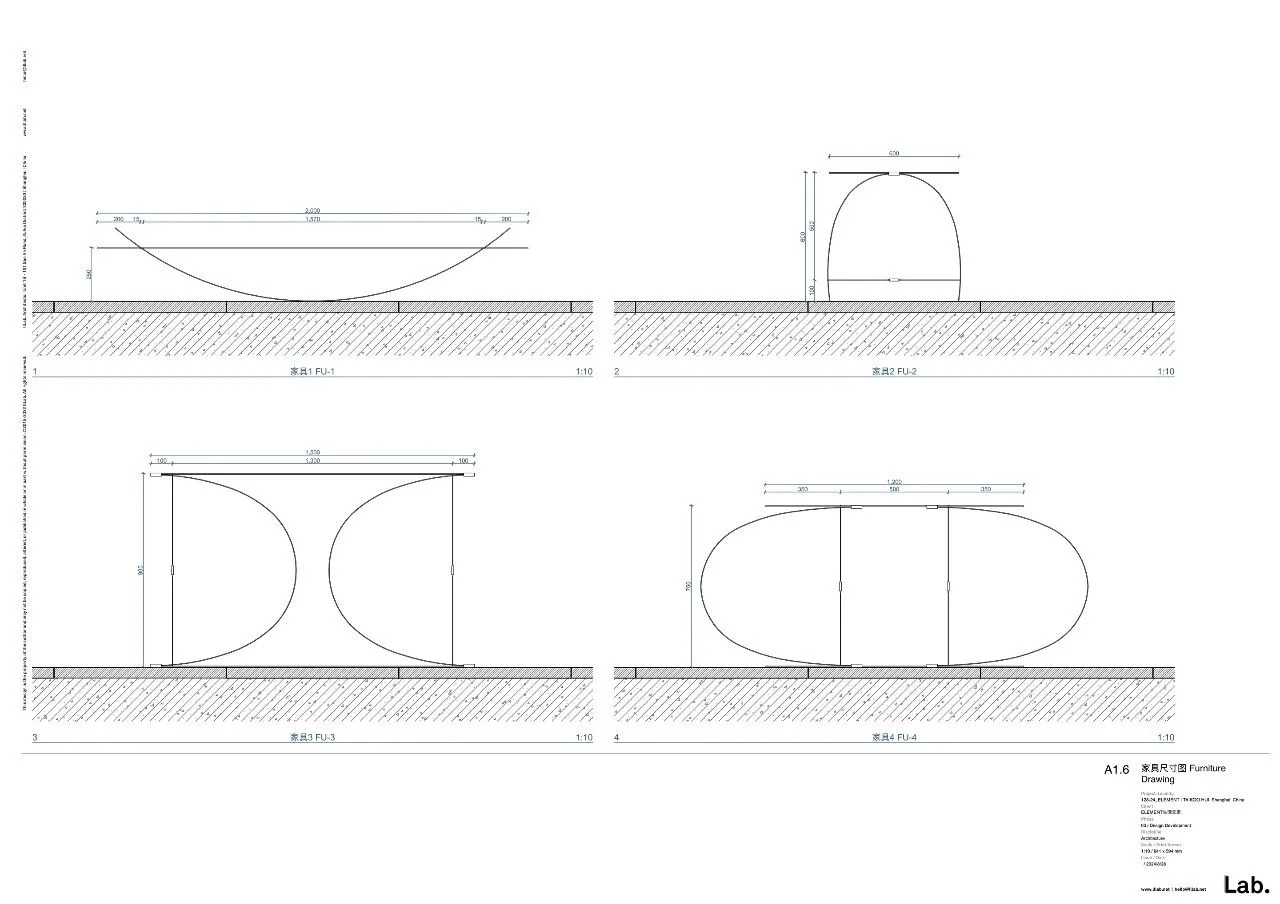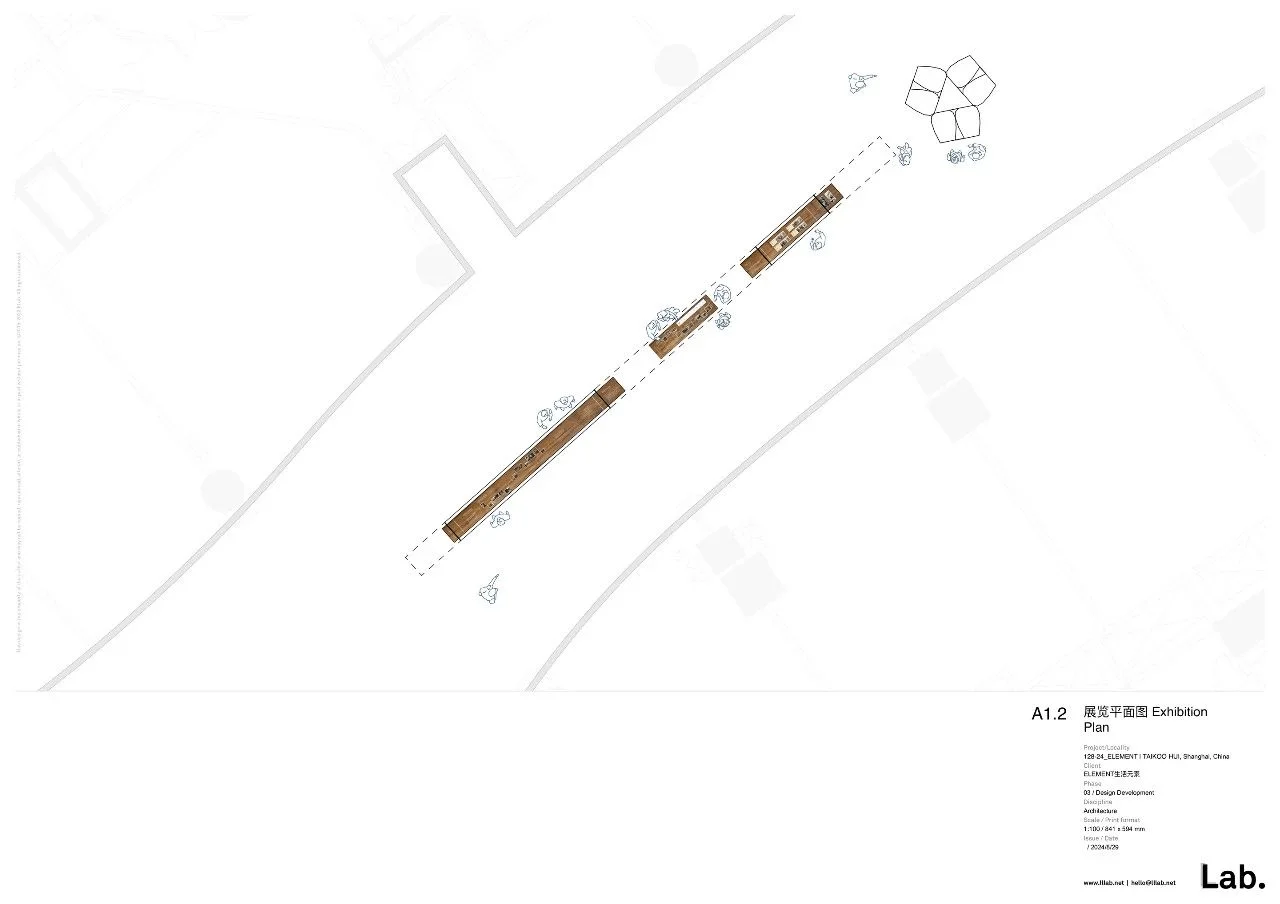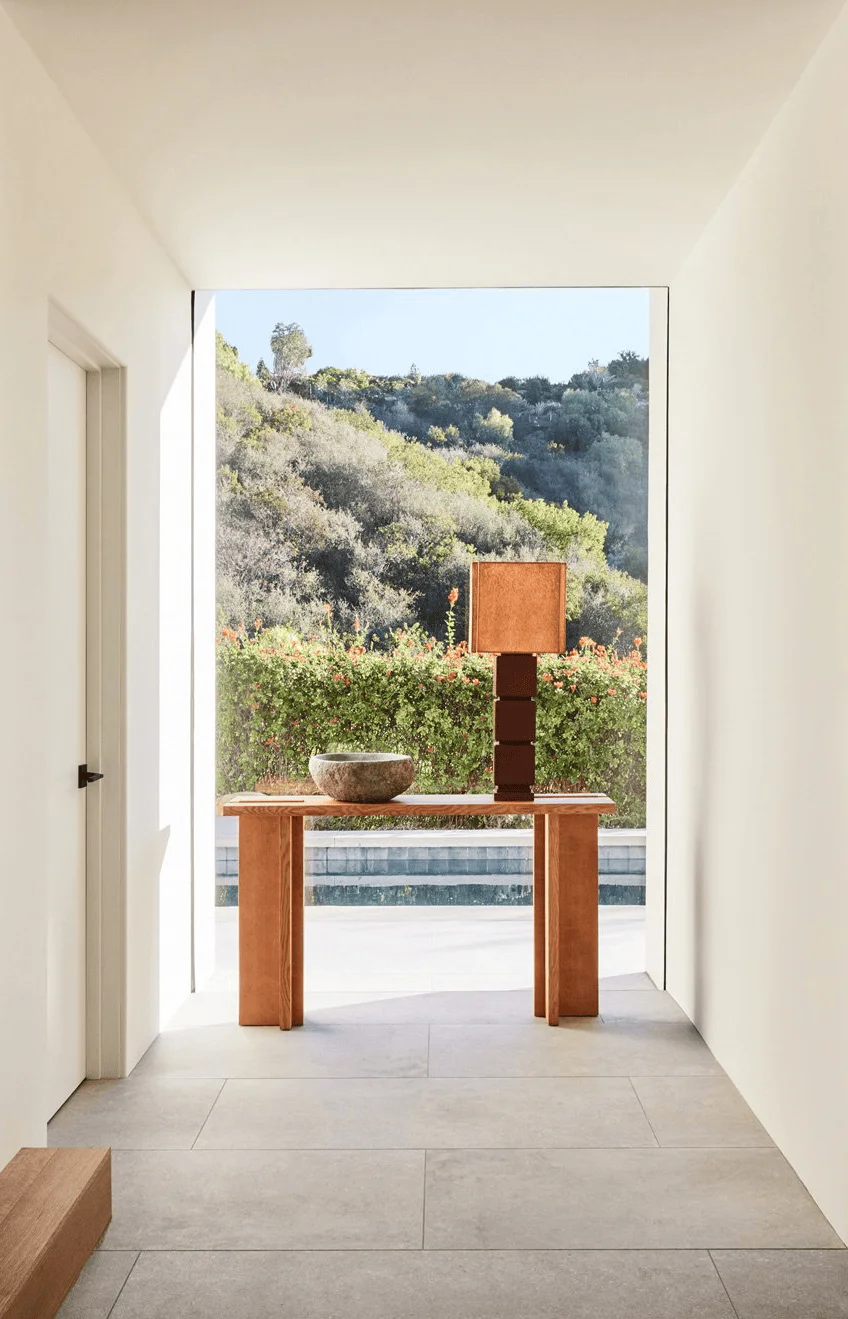llLab. designed the Element Bloom pop-up space and TURN TURN exhibition, showcasing sustainable bamboo architecture and unconventional design.
Contents
Project Background
Element, a lifestyle brand known for its commitment to sustainability, tasked llLab. with designing a pop-up retail space in Shanghai’s bustling Xingye Taikoo Hui. The project aimed to explore the potential of bamboo, a rapidly renewable material, in creating an engaging and sustainable retail environment. The concept of ‘Element Bloom’ reflects the brand’s ethos and the organic nature of the chosen material. This initiative was part of a larger research project by llLab., focusing on the innovative applications of bamboo in architecture, following previous installations in Guilin and New York. The pop-up space served as a platform for showcasing Element’s sustainable products and brand philosophy while pushing the boundaries of bamboo’s architectural applications, embodying unconventional architectural design principles.
Tag:sustainable bamboo architecture
Design Concept and Objectives
Inspired by the brand’s dedication to sustainability and llLab.’s ongoing research into bamboo’s architectural potential, the design concept for Element Bloom revolved around creating a dynamic and engaging space that showcased the material’s versatility. The design team drew inspiration from the natural world, imagining the perspective of an insect observing bamboo at a macroscopic level, highlighting the intricate details of the material’s fibers. This microscopic viewpoint translated into a flowing, wave-like bamboo structure that formed the core of the retail space. The unconventional architectural design aimed to challenge traditional perceptions of bamboo’s use in construction, demonstrating its ability to create aesthetically pleasing and structurally sound forms.
Tag:sustainable bamboo architecture
Bamboo as a Sustainable Material
Bamboo was chosen as the primary building material for its inherent sustainability and its alignment with Element’s brand values. Bamboo is a rapidly renewable resource, known for its strength, flexibility, and aesthetic appeal. The project highlighted bamboo’s potential to be used in a variety of ways, from structural elements to decorative finishes. The flowing forms created within the retail space demonstrated bamboo’s ability to be bent and manipulated into complex shapes, showcasing its structural integrity. This innovative use of bamboo reinforced Element’s commitment to sustainability and provided a unique and engaging experience for visitors, underscoring the importance of bamboo architecture in the broader context of sustainable design. The project aimed to inspire other designers and brands to explore the possibilities of using bamboo in their own projects, promoting its wider adoption in the construction industry.
Tag:sustainable bamboo architecture
Exhibition: TURN TURN
Alongside the retail space, llLab. also curated an exhibition titled ‘Bamboo Bamboo | TURN TURN.’ This exhibition provided a deeper dive into the research and experimentation behind the project, offering visitors a closer look at the properties and possibilities of bamboo. The exhibition showcased various bamboo prototypes and installations, illustrating the material’s versatility and highlighting its potential for use in different applications. The centerpiece of the exhibition was a flowing bamboo landscape made from 3mm thick bamboo sheets, emphasizing the material’s strength and flexibility. This installation served as a testament to the possibilities of using bamboo in unconventional ways, encouraging visitors to rethink their understanding of the material and its architectural potential.
Tag:sustainable bamboo architecture
Construction and Technical Details
The construction of Element Bloom involved innovative techniques to manipulate and assemble the bamboo elements. The team utilized advanced digital fabrication methods to precisely cut and shape the bamboo sheets, ensuring accuracy and efficiency in the construction process. The flowing forms were achieved through a combination of bending and joining techniques, carefully engineered to maintain the structural integrity of the bamboo. The project showcased the potential of combining traditional craftsmanship with modern technology to achieve innovative and sustainable architectural solutions, demonstrating the feasibility of bamboo architecture on a larger scale.
Tag:sustainable bamboo architecture
Project Information:
Project Type: Pop-up Retail Space & Exhibition
Architect: llLab. (Xu Xiang Jian Zhu)
Area: 270 square meters
Project Year: 2024
Project Location: 789 Nanjing West Road, Jing’an District, Shanghai, China
Main Materials: Bamboo
Photographer: Wen Studio


